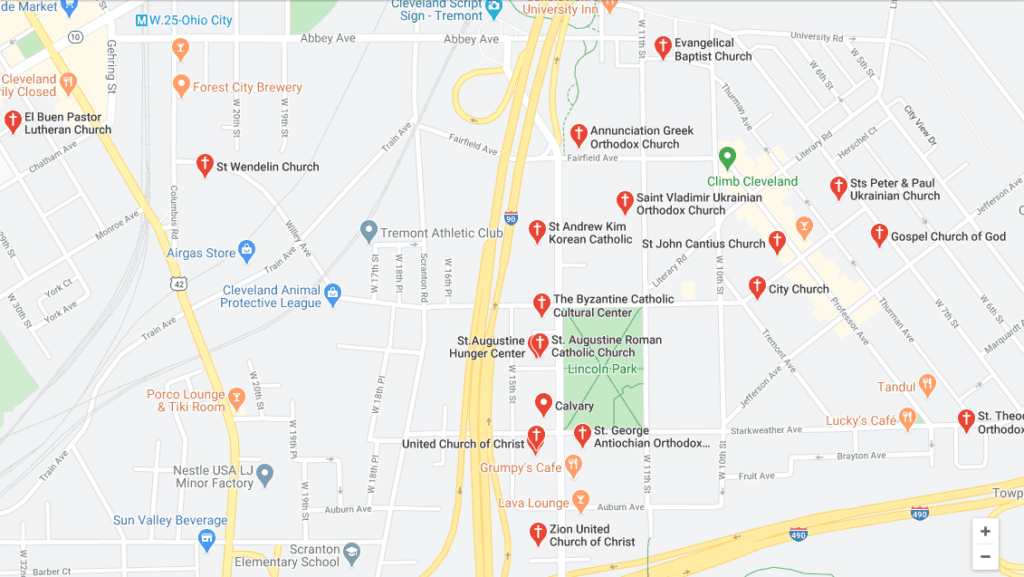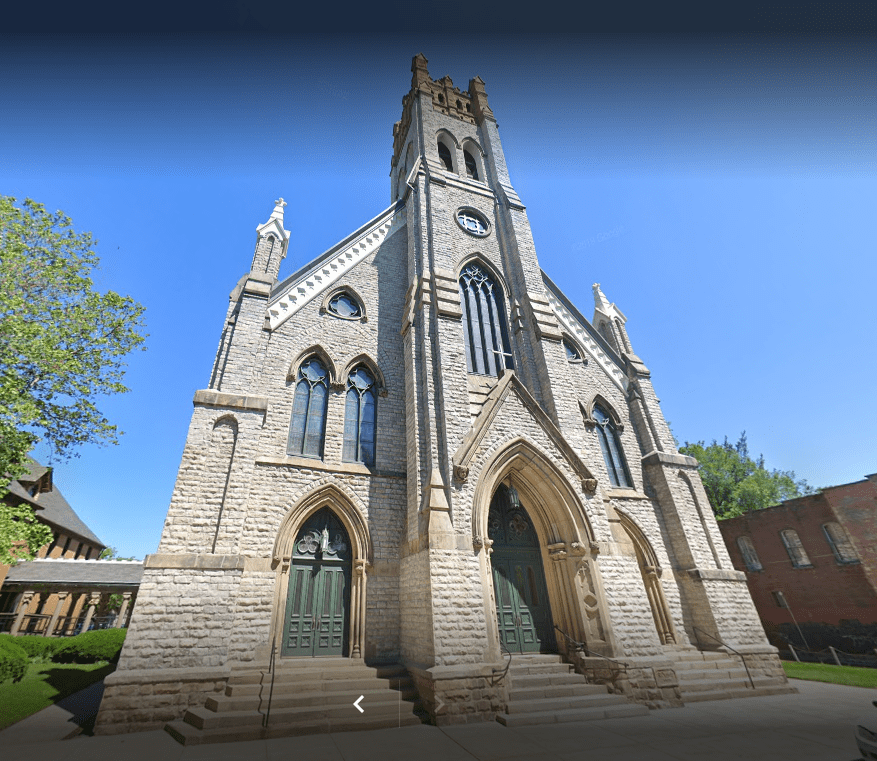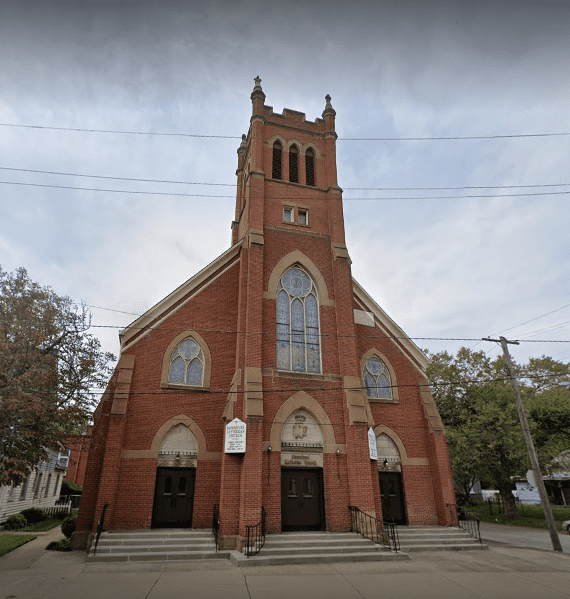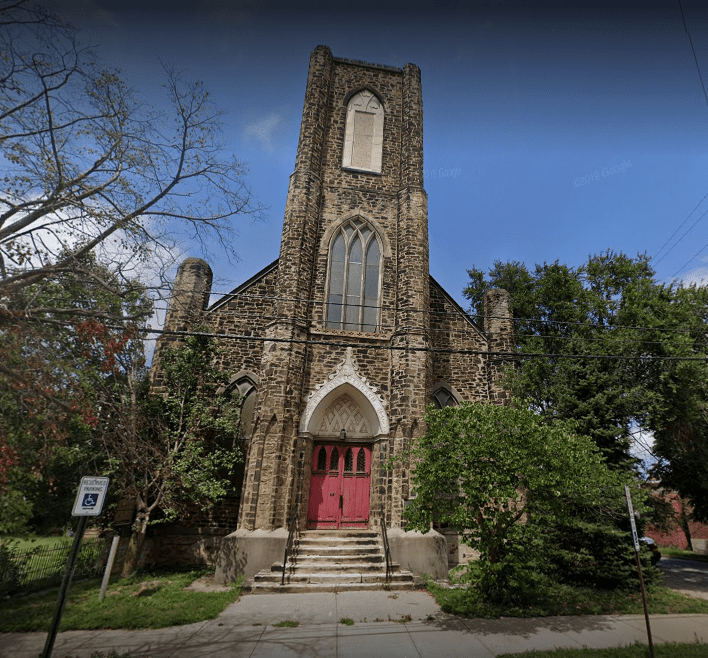By Jeff Katzin, Curatorial Fellow
COVID-19 has disrupted human life on every level, and museums are no exception. During these strange and difficult times, Akron Art Museum staff have ably adapted to all sorts of new roles while working remotely. One of our highest priorities has been to stay connected with our community, even if social distancing means that we have to lean on our online presence more than our physical galleries. To this end, we’ve rolled out a new website, debuted a podcast, sent out kits for at-home art-making, partnered with other museums to create games and puzzles, and more!
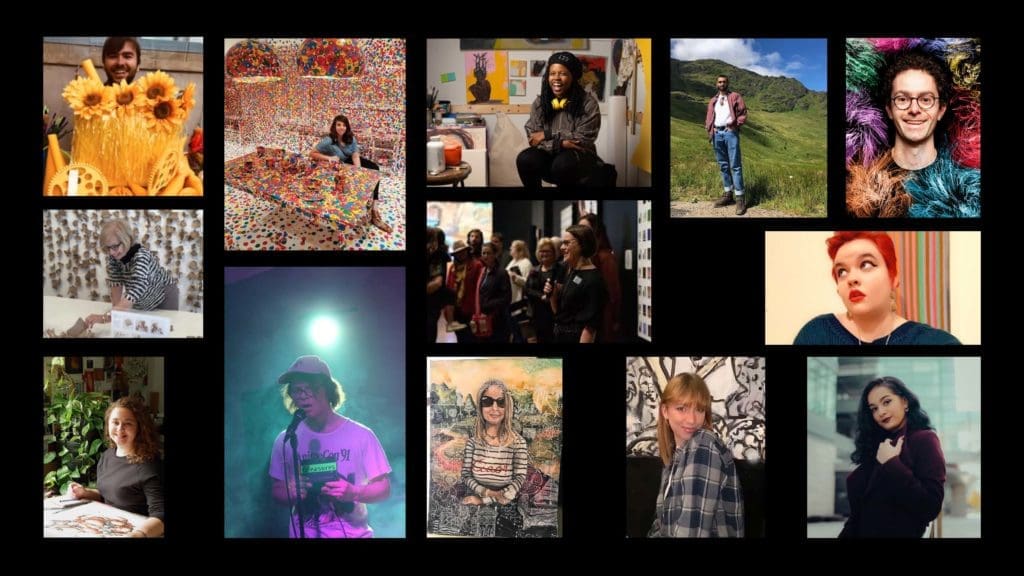
But, with our galleries closed, the pandemic has also given us an occasion to look inward and focus on our collection of artwork in new ways. That’s where I come in, along with my partner in this effort, Katie DiDomenico (Digital Content Creator). We’re slowly working our way through the museum’s holdings, conducting research on individual objects, and writing new labels that will eventually appear on our website. We’re starting with the works of art that are scheduled to come up in other programming so that our colleagues have plenty of background information at their disposal.
Since our work usually happens behind the scenes, I thought it would be fun to share some of it more broadly by highlighting a couple of the more exciting research mysteries that I’ve had a chance to solve.
I started looking into this print by Ora Coltman when Seema Rao, our deputy director, emailed Katie and I with a seemingly simple question: “What location is shown in this picture?” I found that exciting right off the bat. Sometimes art research is about fleeting emotions, nebulous ideas, and invisible histories — I love all of those things, and that’s what I usually work on. Still, pinning down some cold hard facts with a bit of detective work can be a great change of pace.
The first thing that struck me about the print was its title: Main Street, Cleveland. Having grown up on Cleveland’s east side, I knew already that there is no “Main Street” in Cleveland. Since the title was no help (and the files that I have electronic access to were no better), I’d have to use the picture itself as a guide. Luckily, it has some distinctive features. First, it’s set on a hill that slopes upward evenly and gently from left to right. Second, it features a church with a distinctive bit of architecture: a square tower with a crenellated top (like a medieval castle wall) and a particular arrangement of windows, located in the middle of a roof that slopes down evenly on both sides. The church is also behind a row of buildings, so it’s on a different street, and one that doesn’t quite seem to be parallel to the main street depicted in this Main Street print. I decided my best bet was to track down a matching church on or near a hill in Cleveland.
Even art historians like me rely on Google all the time, and Google Maps was my first stop. How long can it take to look through all of the churches in Cleveland, I thought? All morning, it turned out. I never realized that there were quite so many until I had to look up all of them and line up a street view of every single one!
After this lengthy search, I had found three decent possibilities, but none of them seemed to match properly.
All three of them had square and centrally-located towers and generally the right sort of slanting roof, but none had the right arrangement of windows or a crenellated top. And, crucially, none of them were anywhere near a hill. At this point I considered giving up and concluding that Coltman had most likely invented parts of his scene without entirely basing it on a real place, but I thought I’d try one more possibility. I once worked for the Cleveland Public Library, and I knew that they have an extensive database of historic photographs that’s pretty easy to search. After typing in “church” and looking through a couple hundred pictures, I hit upon this one.
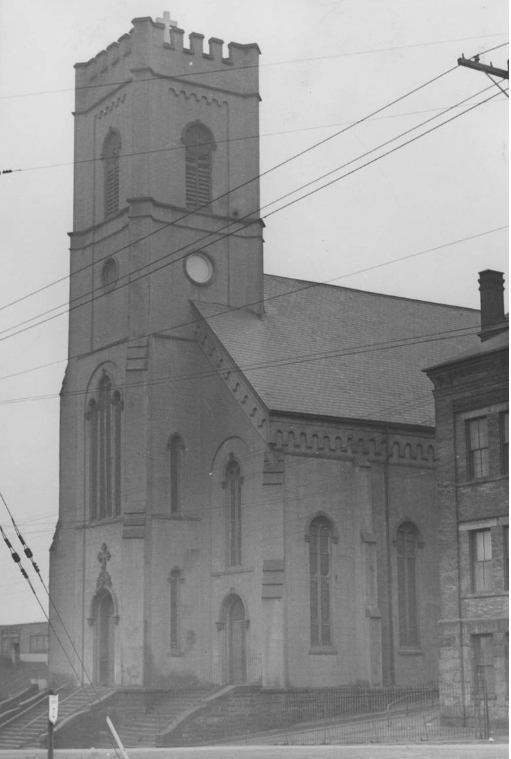
St. Malachi Catholic Church has everything! The square-shaped and centrally-located tower, the slanted roof, and the arrangement of windows. It’s even located right near the top of a steadily sloping hill that leads up from the West Bank of the Flats and into Ohio City. And there was one more detail that really sealed it as a match for Coltman’s picture…
Just north of the church’s location — on an unusual angle that matches Coltman’s print — is a road not named “Main Street,” but rather Main Avenue! St. Malachi, then, even provides an explanation for the seemingly incongruous name of Coltman’s picture — someone must have written it down incorrectly. So, if it’s such a perfect fit, why hadn’t I managed to find this key to my mystery sooner?
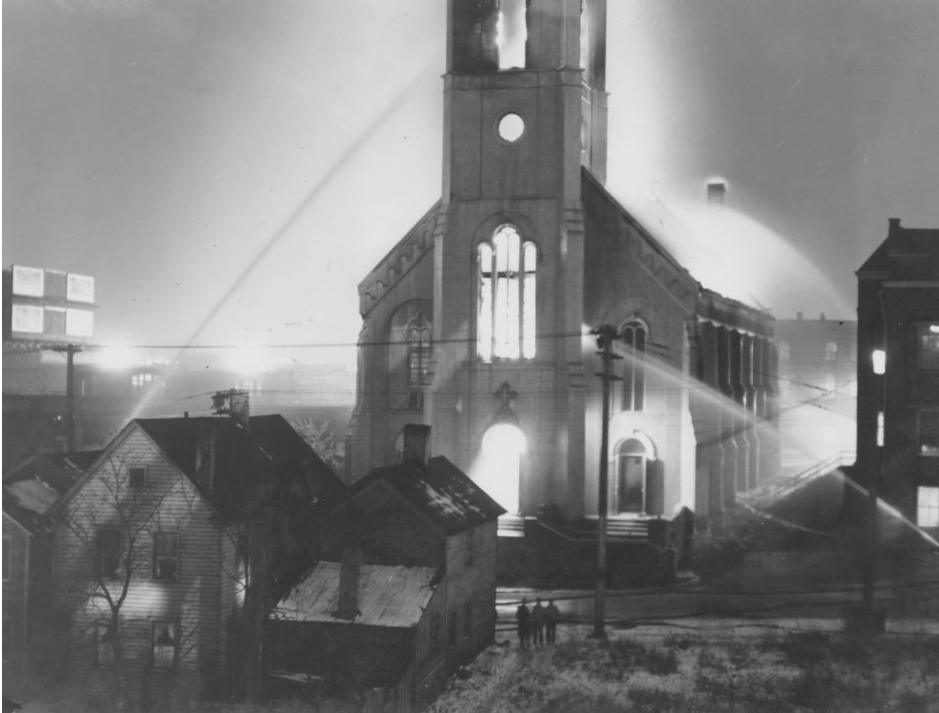
The Cleveland Public Library’s archive of historic photographs managed to provide an answer to this question too: The original St. Malachi Catholic Church was lost in a fire in 1943, less than a decade after Coltman included it in his print. That’s why, when I had come across the current St. Malachi, I didn’t stop to consider it — a new church was built soon after the fire, with a totally different architectural arrangement.
Coltman’s print, then, provides a glimpse of a very different place than the one found in the present day. Just about every building that he depicted seems to be gone — this includes the church, but also the colorful row of houses, which have since been replaced by small industrial and construction workshops. Main Street, Cleveland thus has much to tell us about the past, and it can tell even more now that we know the exact spot that it describes.
Check back July 20th for another intriguing research mystery — the next one involves a case of mistaken identity, an impressive amount of foreign travel, and one of the most amazing art-historical websites that I’ve ever seen!
Coffee with the Collection is made possible with support from the Henry V. and Frances W. Christenson Foundation and the Samuel Reese Willis Foundation.



